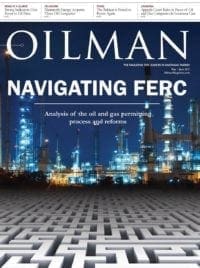As you may know, many of the shale markets are picking up momentum. In Texas, the Permian Basin is taking off and in the last three months had a huge amount of investment activity. Several operators and private-equity firms have exchanged billions in assets as the area surges back. The rig count in the Eagle Ford Basin is also moving up as producers find ways to extract oil faster and less expensively from shale. To top it off, the largest oil and gas producer in the U.S., Exxon Mobil, announced that it plans to turn to shale basins for growth.
While the U.S. is producing more oil and gas, last November OPEC members decided to curtail oil production for six months to lower reserves in an effort to increase the price of oil. The 14-member OPEC countries agreed to cut oil production from 33.8 million barrels a day to 32.5 million barrels a day with hopes of non-OPEC countries cutting 600,000 barrels a day. The goal is to trim output by 1.8 million barrels a day in total. To some extent, this practice has worked. At the time WTI, oil prices were trading at $48.97 a barrel; as of this writing, oil is trading at $52.25 a barrel. Recently, some of the biggest OPEC producers announced they’d like to push crude prices to $60 a barrel, signaling they’ll support an additional production cut of six months at the next OPEC meeting May 25.
Our feature in this edition dives into how the Federal Energy Regulatory Commission operates. FERC is charged with regulating and monitoring energy, and overseeing the transportation of oil by pipeline, as it relates to interstate commerce. FERC also issues permits to build interstate natural gas pipelines and storage projects, and reviews proposals for LNG terminals. Be sure to check it out, as our new managing editor, Sam Cook, navigates through FERC’s proposal and permitting process.
The CEO of U.S. Energy Media, Emmanuel Sullivan is a technical writer who has built up his profile in the oil and gas industry. He lives and works in Houston, where he publishes Oilman and Oilwoman on a bimonthly basis, and Energies quarterly, distributing the magazine to energy thought leaders and professionals throughout the United States and around the world. At a time when technology is rapidly changing, he provides an invaluable service to oil & gas, and renewable energy executives, engineers, and managers, offering them both broad and specific looks at the topics that affect their livelihoods. Sullivan earned his BA in Communications at Thomas Edison State University and his MA in Professional Writing at Chatham University.





